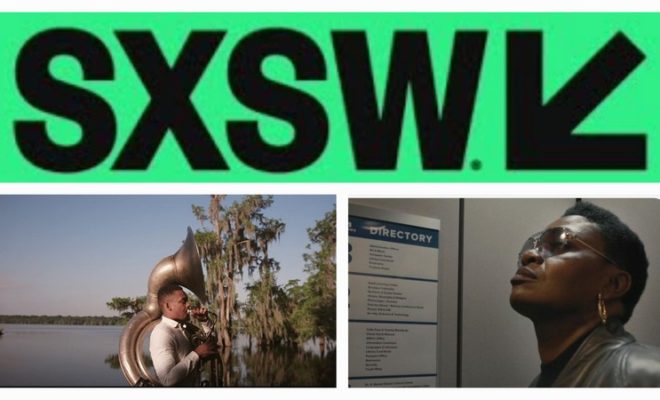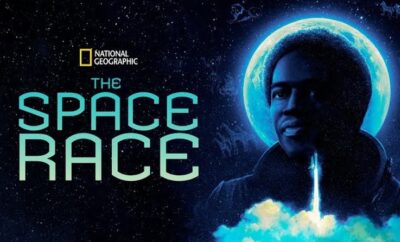
Movie Reviews
SXSW – Shorts Program 2
By: Kelly Kearney
This year’s SXSW Documentary Short entries highlighted human survival in the face of insurmountable odds. In these small slices of life, we head to the Bayou where residents live under the constant threat of climate change destroying their lives. We also go to New York where learn about a program connecting families to their incarcerated loved ones with the help of The New York Public Library and dozens of volunteers.
BELLE RIVER
The documentary short Belle River takes us to Pierre Part, Louisiana into the Atchafalaya basin flood zone where generations of French-Cajuns call it home. As the rains fall and the waters rise in the Bayou, the threat of losing everything hangs over the inhabitants’ peaceful lives like a dark storm cloud that never seems move on. The residents of the area live day to day with the fear that the growing change in climate will destroy everything they know every time they weather updates. Their faith being their only hope that soon the waters will recede, the people who live along Belle River (close to The Morganza spillway) get the news that their prayers won’t be answered anytime soon. After a series of brutal storms, the state of Louisiana announces the spillway will be opened to protect the populated cities of New Orleans and Baton Rouge. The hatch will be opened on Sunday and, with poverty, illness and regional pride keeping them in the Bayou, these residents are forced to choose between the only life they have ever known or an uncertain future somewhere else. Belle River follows the residents as they prepare for the worst, which at this point, seems to be a constant way of life for them all.
Cutting between images of the spillway and interviews with the people most affected by the damaging storms and floods, directors Guillaume Fournier, Samuel Matteau and Yannick Nolin make it a point to show the beauty of the Bayou in spite of the tragedies it’s faced. It is a region where people live day to day in ankle deep water and driftwood littering the puddle-clogged roads, and yet, there’s still life, still hope and still moments of happiness here. Beauty can be found in tragedy and in this flood zone the fallen tree branches hang heavy filling with groups of egrets gathering before the next storm.
Nature’s brutality can be all-consuming and, with the climate crisis nipping at Louisiana’s heels, evidence that the natural world is heading for a reset is undeniable. The murky waters seek payback for centuries of planetary abuse, but it’s the people of the Bayou and their collectivist community that really speaks to the heart of this piece. What might surprise some viewers is how the directors manage to brilliantly weave together the pain and fear these people live with daily with then-President Donald Trump’s promises of restoring dignity to every corner of America. Apparently, Pierre-Part never made it on his fantasy-map and the people know it. They are immune to the false promises spoken from the mouths of lying elites, as we see when the camera focuses in on a weathered and broken tree the townspeople turned into a replica of Trump’s rot and his ignorance towards what makes this country great. It is a greatness that can be found in humankind’s ability to persevere and overcome insurmountable odds. It is the kindness of community outreach. It’s in the preservation of a forgotten language and in the chance to better their lives through the democratic process that so often seems out of reach for many. Out of all the moments in this documentary short the one that is sure to stick with you the longest is a drone shot of Morganza spillway. Holding back the violent and thrashing flood waters threatening the lives of Louisiana’s citizens is one very strained metal door. It is eerie and terrifyingly knowing it is the only barricade to keep the horrors from swallowing up the region and its people’s lives. It is unsettling, angering and leaves you with a feeling of helplessness and heavy dose of respect for the residents who seem like an afterthought in their own state.
Fournier, Matteau and Nolin set the mood with a series of aerial drone shots of flooded out ghost towns and amusement parks ironically named Every town America. A patriotic dream washed away and into the pockets of energy barons and lobbyists who couldn’t point to the Bayou if they were handed a map. Wildlife like alligators swimming next to homes reminds us of the dangers these people face daily, but they do not seem concerned. This is a way of life some have only ever known and, yes, joy can still be found here in – even if it’s a slow dance in wader boots.
Today we are witnessing millions of refugees fleeing their homes for safety, so it seems easy to apply those scenarios to our own patches of soil – when things get tough, the tough get going. However, for many, leaving isn’t an option and, even more so, many would rather stay and fight for their land and its legacy. For the people living in the flood zones of Louisiana who don’t know another way of life, Belle River is a must-watch snapshot of humanity pitted against nature and greed; a combination that in America can be as inspiring as it is impossible to defeat.
VIDEO VISIT
Each week the Brooklyn library fills up with people wanting to video chat with their incarcerated loved ones. The twenty-five-minute short documentary Video Visit shows a personal account of those visits, as well as a closer look at the librarians and volunteers who work hard to ensure those families stay connected to their loved ones.
In 2014 the Brooklyn Public library partnered with the New York City Department of Corrections to launch a pilot program allowing families to skip the traumatizing trips to Rikers Island in lieu of a friendlier and less obtrusive setting for video calls and tele- visits at its central branch. To put things into perspective, the infamous and overcrowded Rikers Island houses more than ten thousand inmates, eighty five percent of whom are pre-trial holds — yet to be convicted. This non-profit program is the first in the country to combine the Public Library System with the Department of Corrections and in Video Visit we see it’s not only thriving but also caught the eyes of the prison profiteers, most notably the Florida State Government.
As we watch the staff of volunteers make phone calls, set up appointments and even offer to connect parolee families with housing options things take a turn for the predictable when the DOC changes the rules and demands the library act as an extension of the prison or risk losing the program all together. In a meeting with the volunteers, we learn that anyone visiting Rikers is subjected to long and hot bus rides followed by intrusive under their clothing searches, with no guarantees they will even get to see their loved ones once they go through security. Since the launch of the video-visit program the library has become the popular alternative for people who cannot miss a day of work just to be traumatized by the hands of the prison system. The library, unlike Rikers, treats the families with respect and privacy – two things the DOC claims is a problem for safety but for whom they never explain. To allow these visits to continue the DOC orders the New York Public Library to do prison-level security checks and expect the volunteers to enforce their regulations if someone breaks those rules. When the Brooklyn Library refuses to turn their volunteers into cops and wardens, the DOC returns with even stricter mandates – requiring all visitors to show their legal ID’s with the understanding that the DOC will keep that information for fifteen years and share it with other agencies like ICE. Knowing undocumented immigrants will stay away from an in-person visit now that they have to hand over their papers just to check on their loved ones, the library fights the order but the DOC refuses to back down. It saw this pilot program as a way to fill up more cells and, yes, it is all about the money. When the head of the program gets a call about the sixty prisons in Florida looking to adopt the New York program in their state the idea of monetizing it is introduced. This is true, in particular, for the Miami-Dade County correctional facilities, which claims it mainly wants to add this program so it can save libraries in the age of technology. But when the state representative skirts around the money topic by claiming he isn’t looking at this through a political lens, the head of the New York program director isn’t buying it. It feels like another political cash grab and ICE work-around and not some altruistic save for libraries and suffering families who want to see their loved ones. Telecom companies in New York City jails have already profited eight million dollars per year on fees for prison phone calls and with Florida and other states pushing for a similar program it is only a matter of time before the Empire State follows suit.
In one of those most heartbreaking scenes in the film, a Czech mother video conferences her son who is struggling mentally and cannot think of a single good moment from his day to share with her. We never know what landed him in jail, but the film isn’t about that. Yet we see her worried about his safety and the treatment he is receiving. When the video unexpectedly cuts off you can physically feel her panic. Jail is a shared experience between both the inmates and the people who love them and director Malika Zouhali-Worrall does a superb job of making the viewer feel like we are right there with this mother in that room. By documenting what families, inmates and volunteers go through to stay connected, Zouhali-Worrall gives us a visual account of injustice that makes up the American Justice system. In a country with more prisoners than college graduates, the jail cell is a capitalist’s cash register with punishment the main purpose and not rehabilitation. Video Visit is an aggravating look at how far the prison system thinks it can go and how powerful it has become as it places price tags on every prisoner’s head. The short manages to capture a mother’s fear and the kindness that remains steadfast in the face of a cruelty and greed.
Whether you have a family member incarcerated or not, if you care about the rights of humans and the prison system our tax dollars pay for then Video Visit is a must watch. It might leave you angry, but it is also sure to gift you with a feeling of hope that there is still good in the world – and you might just find it working in your local library.





You must be logged in to post a comment Login